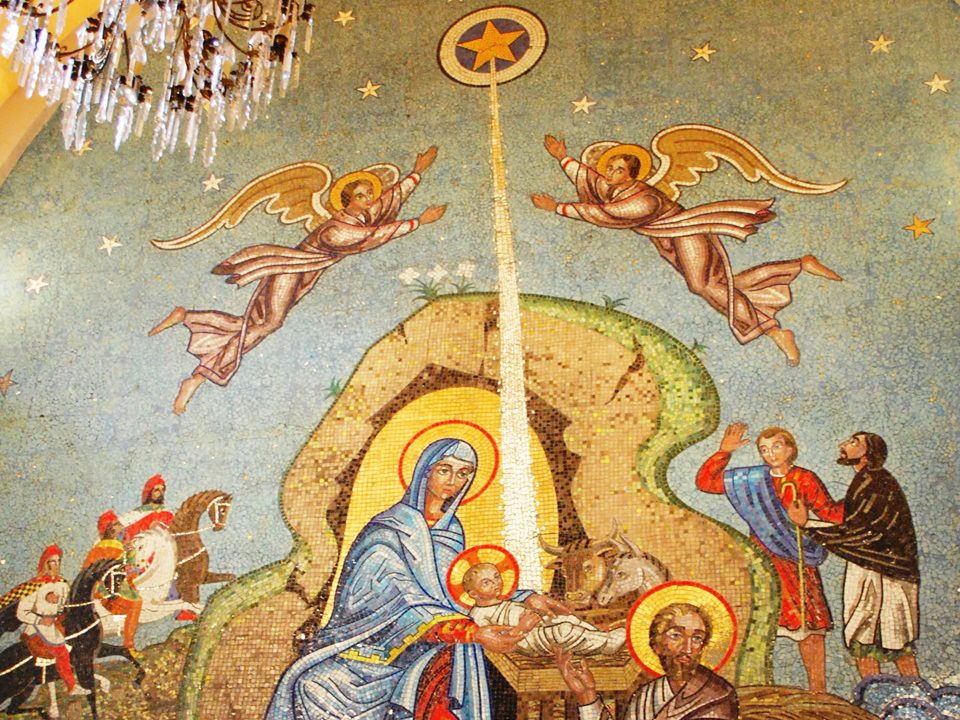As far back as the fourth century, St. John Chrysostom pointed out that the Star of Bethlehem didn’t behave like any other star anyone had ever seen. Most stars, he said, appear to move from east to west, like the sun; but this star “wafted from north to south; for so is Palestine situated with respect to Persia.”
It appeared, moreover, burning bright at midday, St. Chrysostom added, “and this is not within the power of a star, nor even of the moon.”
Finally, as the Magi approached their goal, the star descended from heaven and hovered above the Holy Family’s home.
“This star,” said St. Chrysostom, “was not of the common sort, or rather not a star at all, it seems to me, but some invisible power transformed into this appearance.”
Throughout the Bible, the stars in the sky are identified with angels in heaven (see, for example, Job 38:7, Revelation 1:20, 12:4). The motif appears in the Bible, and in other Jewish sources from the time of Jesus. The philosopher Philo of Alexandria speculated that the stars “are living creatures, but of a kind composed entirely of mind.”
Brilliant scientists have spent years combing through ancient chronicles, reconciling calendars, and working out the equations — all so that they could identify the Star of Bethlehem with a known astronomical phenomenon: Halley’s Comet, for example, or some once-in-centuries conjunction of planets. Their arguments are ingenious; but I’m not persuaded.
St. Chrysostom may have been pre-scientific and pre-critical in his thinking; but he wasn’t stupid. He knew that stars don’t do what the Star of Bethlehem was said to do. I’m inclined to agree with him that this was yet another appearance of a Christmas angel. In the beginning, God had created the heavens and the earth; and all the angels were caught up in the cosmic drama. Now all find themselves, once again, caught up in its climax.
With John, I have to conclude that an angel appeared to the Magi as light and led them to true worship — which, as I’ve said before, is what angels were created to do.
St. Pope Gregory the Great accepted the angelic interpretation. He observed, too, the great difference between the way God dealt with the shepherds and the way he dealt with the Magi.
The shepherds, even though they were the lowliest of uneducated Jews, were still members of the Chosen People, who had heard the proclamation of the truth all their lives. To them God sent angels undisguised, as it were, and the angels spoke to them in plain language. “But a sign and not a voice guided the gentiles,” St. Gregory explained. “For they were not prepared to make full use of reason to know the Lord.”
To understand the meaning of Christmas, the simplest of pious field hands were better equipped than the most erudite of scholars.
What brought the Magi to the crib in Bethlehem, however, was their ardent disposition to know the truth. That’s something the angels could see — and work with.

